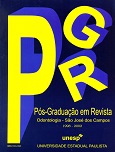Comparação da adesividade de dois sistemas adesivos auto-condicionantes em esmate de dentes bovinos
DOI:
https://doi.org/10.14295/bds.2001.v4i2.116Abstract
A introdução de novos sistemas adesivos autocondicionantes trouxe insegurança e dúvidas para os clínicos, pois questionava-se a eficácia de seu uso uma vez que dispensam o condicionamento ácido prévio. Objetivando investigar a capacidade de adesão desses sistemas adesivos através de ensaios de cisalhamento, empregamos três sistemas adesivos sendo 2 autocondicionantes e um convencional em esmalte e realizamos ensaios. Os resultados demonstraram que esses sistemas, quando comparados com o sistema adesivo convencional, promovem uma efetiva adesão, e que ao ser aplicado teste estatístico ANOVA One-Way sob um índice de significância p < 0,05, os valores foram estatisticamente diferentes, ou seja, para o Scotchbond Multipurpose – 3M - (SBMP): 10,95 MPa com desvio padrão de 2,55, como grupo controle, onde foi utilizado condicionamento ácido prévio. Os outros dois sistemas adesivos autocondicionantes apresentaram os seguinte valores: Prompt –ESPE- (PPT): 9,15 MPa, com desvio padrão de 8,18, e o Clearfil S E Bond –Kuraray – (CSEB): de 12,42 MPa com desvio padrão de 4,03. Os resultados sugerem que podemos empregar esses novos sistemas adesivos em esmalte, e provavelmente, poderemos conseguir bons resultados adesivos, tão bom ou até melhor do que os sistemas convencionais.
Downloads
Downloads
Published
How to Cite
Issue
Section
License
Brazilian Dental Science uses the Creative Commons (CC-BY 4.0) license, thus preserving the integrity of articles in an open access environment. The journal allows the author to retain publishing rights without restrictions.
=================




























